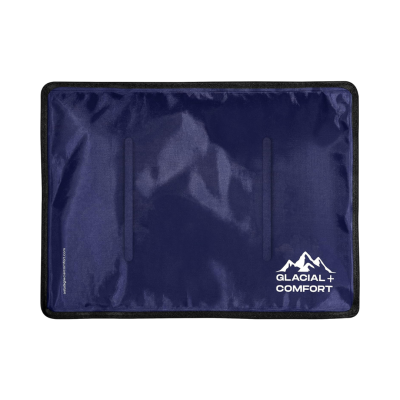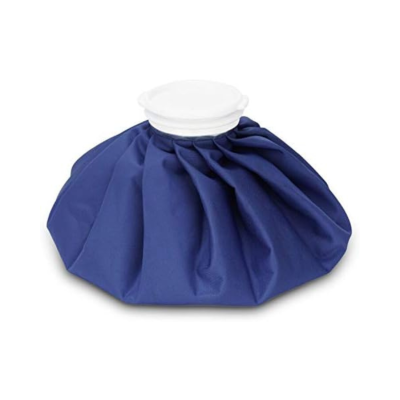Throughout my life, I’ve always used the usual hot and cold compresses. It never occurred to me that there could be a difference in their effectiveness until I tried a gel ice pack for myself.
Here’s how Gel Ice Pack compares to Water Ice Pack:
Gel Ice Pack

- Composition: Contains a gel-like substance that remains flexible even when frozen. Gel is typically made of water mixed with polymers or other substances to create a viscous consistency.
- Flexibility: Maintains flexibility and conformity to the shape of the applied area even when frozen. Suitable for wrapping around joints or body contours.
- Temperature Retention: Generally retains cold temperatures for a longer duration compared to traditional water ice packs. Can provide a more sustained and gradual cooling effect.
- Reusability: Often reusable for multiple applications. Can be refrozen after use without losing effectiveness.
- Leakage: Less prone to leakage since the gel is typically contained in a sealed, durable pouch. Gel substance stays in place, reducing the risk of mess.
- Weight: Can be heavier than water ice packs due to the gel’s density. May feel bulkier, especially in larger sizes.
Water Ice Pack

- Composition: Consists of water in a sealed plastic pouch. Freezes into a solid block of ice.
- Conformity: Initially rigid when frozen, making it less adaptable to body contours. Becomes more malleable as it starts to melt during use.
- Temperature Retention: Tends to lose cold temperature relatively quickly compared to gel ice packs. Provides an intense but shorter duration of cold therapy.
- Reusability: Can be refrozen for multiple uses. May not maintain the same level of effectiveness after repeated uses.
- Leakage: More prone to leaking as the ice melts, potentially causing a mess. Careful handling is required to prevent puncturing the plastic pouch.
- Weight: Generally lighter than gel ice packs, especially when considering similar sizes. Provides a less bulky and more portable option.
The Winner
While both gel ice packs and water ice packs have their advantages, it can be argued that gel ice packs are generally superior due to their flexibility, longer-lasting cold therapy, and reusability.
The gel’s ability to conform to the shape of the affected area, coupled with a more extended duration of coldness, makes gel ice packs a preferred choice for efficient and comfortable therapeutic applications.
How to Choose the Best Gel Ice Pack?
Choosing the right gel ice pack for pain relief involves considering factors such as size, flexibility, durability, and ease of use. Here’s a short guide to help you make an informed decision:
- Size and Shape: Select a gel ice pack that is appropriately sized for the area you intend to treat. Smaller packs are suitable for targeted areas like joints, while larger ones are better for back or neck pain. Consider packs with adjustable straps or wraps for a secure fit around specific body parts.
- Flexibility: Opt for gel ice packs that remain flexible even when frozen. This ensures that they conform to the contours of your body for better contact and effectiveness. Some gel packs are designed to remain pliable even at very low temperatures, allowing for comfortable use.
- Duration of Cold Therapy: Check the expected duration of cold therapy provided by the gel ice pack. Some packs are designed for quick relief over short periods, while others offer prolonged cooling. Look for packs with extended cooling times if you require longer-lasting pain relief.
- Reusable vs. Disposable: Decide whether you prefer a reusable gel ice pack or a disposable one. Reusable packs are typically more cost-effective in the long run, but disposable options might be more convenient for travel or occasional use.
- Ease of Use: Choose a gel ice pack with a user-friendly design. Look for packs that are easy to apply and remove, especially if you have limited mobility or are using them for self-treatment. Some gel packs come with features like straps, Velcro closures, or sleeves to make application hassle-free.
- Durability: Consider the durability of the gel ice pack, especially if you plan to use it frequently. Look for packs made from high-quality materials that resist punctures and leaks. Reinforced seams and a durable outer covering can enhance the longevity of the gel pack.
- Temperature Regulation: Check if the gel ice pack has temperature regulation features. Some packs are designed to provide consistent cold therapy without becoming too rigid, ensuring a comfortable experience.
- Safety Considerations: Ensure that the gel inside the pack is non-toxic and safe for use against the skin. Check for packs that comply with safety standards to avoid any adverse reactions.
- Versatility: Choose a gel ice pack that can be used for both cold and hot therapy. Some packs can be heated in the microwave, providing flexibility for different types of pain relief.
- Reviews and Recommendations: Read customer reviews and seek recommendations from healthcare professionals or friends who have used gel ice packs for pain relief. Real-world experiences can provide valuable insights into the effectiveness and comfort of different products.
Is Gel Ice Pack Worth It?
What I found was that the gel pack was much more versatile and effective than any other compress I had ever used. Not only can it be used for both hot and cold therapy, but the gel pack also molds to the shape of the injured area, providing better coverage and relief.
Another advantage of gel packs is that they can be reused multiple times, making them a more cost-effective option in the long run. They are also much more durable than traditional compresses and less likely to leak or tear.
Furthermore, gel packs come in a variety of sizes and shapes, making them perfect for treating different areas of the body. Whether you need to soothe a sore back, reduce swelling in a sprained ankle, or relieve pain in a stiff neck, there is a gel pack that can help.
Would I Recommend Using a Gel Ice Pack?
Overall, I highly recommend giving gel packs a try if you haven’t already. They are a game-changer when it comes to treating injuries and providing relief.


[…] key difference between a gel ice pack and a conventional ice pack lies in their composition and […]